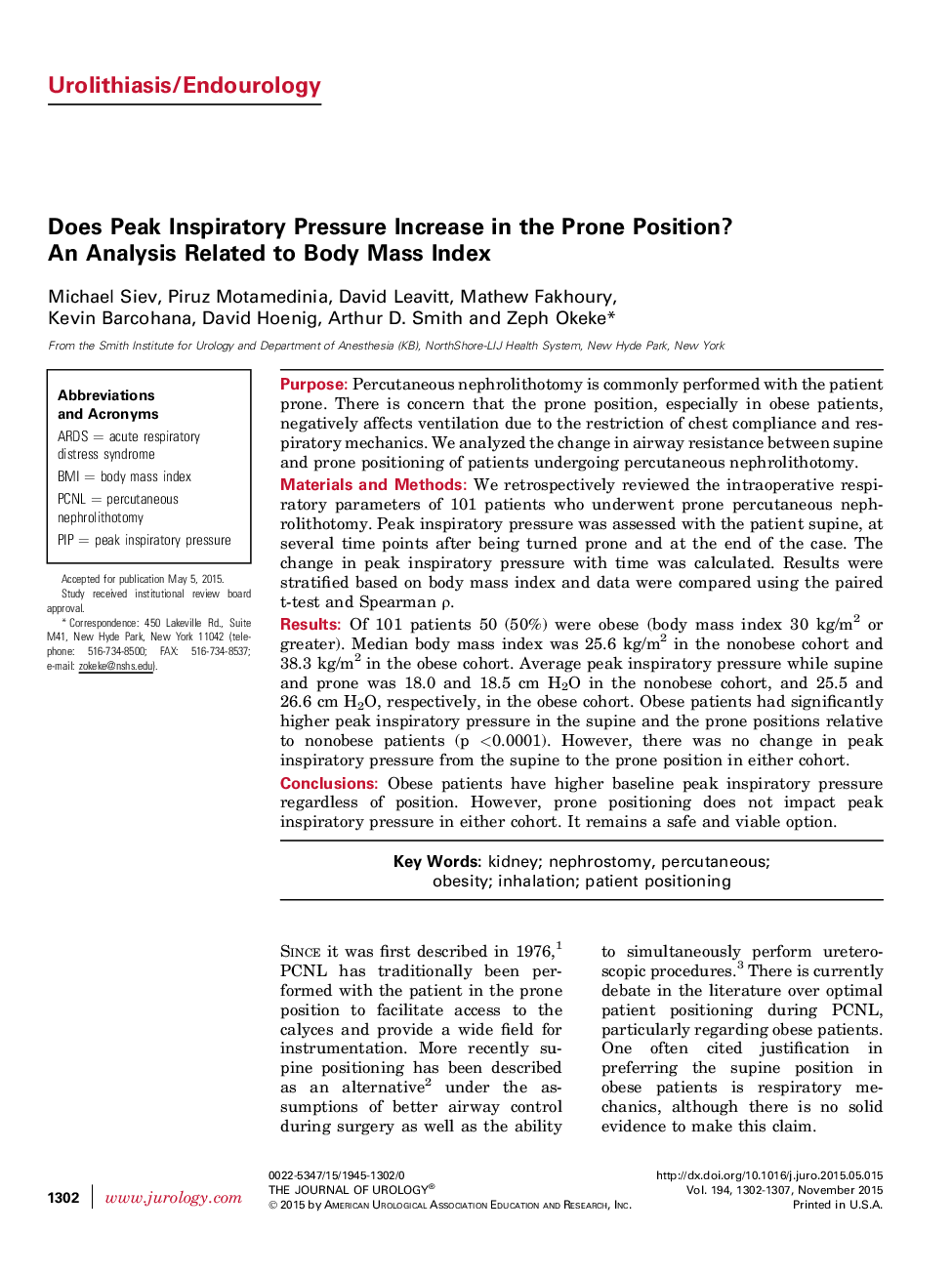| Article ID | Journal | Published Year | Pages | File Type |
|---|---|---|---|---|
| 3860982 | The Journal of Urology | 2015 | 6 Pages |
PurposePercutaneous nephrolithotomy is commonly performed with the patient prone. There is concern that the prone position, especially in obese patients, negatively affects ventilation due to the restriction of chest compliance and respiratory mechanics. We analyzed the change in airway resistance between supine and prone positioning of patients undergoing percutaneous nephrolithotomy.Materials and MethodsWe retrospectively reviewed the intraoperative respiratory parameters of 101 patients who underwent prone percutaneous nephrolithotomy. Peak inspiratory pressure was assessed with the patient supine, at several time points after being turned prone and at the end of the case. The change in peak inspiratory pressure with time was calculated. Results were stratified based on body mass index and data were compared using the paired t-test and Spearman ρ.ResultsOf 101 patients 50 (50%) were obese (body mass index 30 kg/m2 or greater). Median body mass index was 25.6 kg/m2 in the nonobese cohort and 38.3 kg/m2 in the obese cohort. Average peak inspiratory pressure while supine and prone was 18.0 and 18.5 cm H2O in the nonobese cohort, and 25.5 and 26.6 cm H2O, respectively, in the obese cohort. Obese patients had significantly higher peak inspiratory pressure in the supine and the prone positions relative to nonobese patients (p <0.0001). However, there was no change in peak inspiratory pressure from the supine to the prone position in either cohort.ConclusionsObese patients have higher baseline peak inspiratory pressure regardless of position. However, prone positioning does not impact peak inspiratory pressure in either cohort. It remains a safe and viable option.
